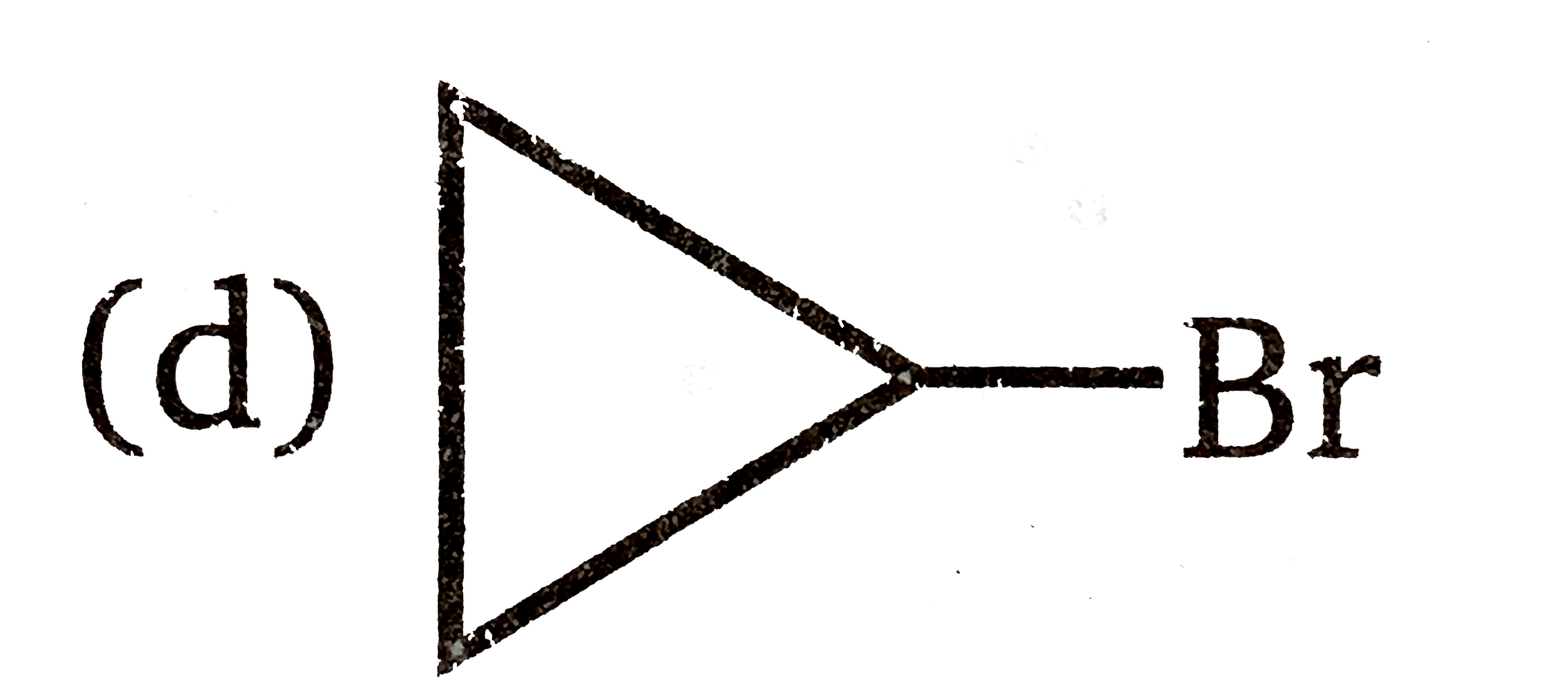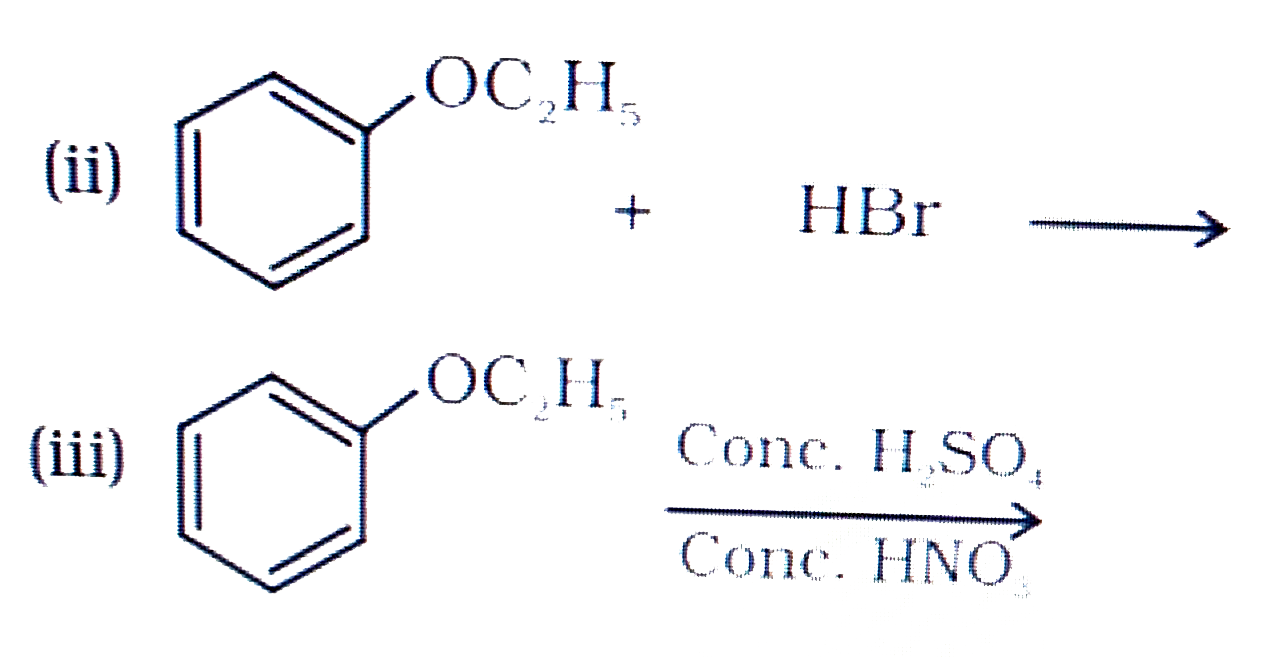The product of following reaction is-
C2H5O−+CH3CH2I→
C6H5OC2H5
C2H5OC2H5
C6H5O−+CH3CH2I
C6H5I
The correct Answer is:B
To solve the reaction between C2H5O− (ethoxide ion) and CH3CH2I (ethyl iodide), we can follow these steps:
Step 1: Identify the Reactants
The reactants in this reaction are:
- Ethoxide ion C2H5O−
- Ethyl iodide CH3CH2I
Step 2: Understand the Nature of the Reactants
The ethoxide ion C2H5O− is a strong nucleophile because it has a negative charge on the oxygen atom, making it electron-rich. Ethyl iodide CH3CH2I is an alkyl halide, where iodine is a good leaving group due to its ability to stabilize the negative charge after leaving.
Step 3: Nucleophilic Attack
In the reaction, the ethoxide ion will perform a nucleophilic attack on the carbon atom of ethyl iodide that is bonded to the iodine atom. This carbon is electron-deficient due to the presence of the electronegative iodine atom.
Step 4: Formation of the Product
When the ethoxide ion attacks the carbon atom, the bond between the carbon and iodine breaks, resulting in the formation of a new bond between the ethoxide ion and the carbon atom. The product formed is:
C2H5OCH2CH3
This compound is known as diethyl ether or ethoxyethane.
Step 5: Write the Final Equation
The overall reaction can be summarized as:
C2H5O−+CH3CH2I→C2H5OCH2CH3+I−
Conclusion
The product of the reaction is diethyl ether C2H5OCH2CH3.
---
The reactants in this reaction are:
- Ethoxide ion C2H5O−
- Ethyl iodide CH3CH2I
The ethoxide ion C2H5O− is a strong nucleophile because it has a negative charge on the oxygen atom, making it electron-rich. Ethyl iodide CH3CH2I is an alkyl halide, where iodine is a good leaving group due to its ability to stabilize the negative charge after leaving.
In the reaction, the ethoxide ion will perform a nucleophilic attack on the carbon atom of ethyl iodide that is bonded to the iodine atom. This carbon is electron-deficient due to the presence of the electronegative iodine atom.
When the ethoxide ion attacks the carbon atom, the bond between the carbon and iodine breaks, resulting in the formation of a new bond between the ethoxide ion and the carbon atom. The product formed is:
C2H5OCH2CH3
This compound is known as diethyl ether or ethoxyethane.
The overall reaction can be summarized as:
C2H5O−+CH3CH2I→C2H5OCH2CH3+I−
The product of the reaction is diethyl ether C2H5OCH2CH3.
Topper's Solved these Questions
Similar Questions
Knowledge Check
The major product of the following reaction is:
CH3−CH=CH2+HBr(C6H5CO)2O2 peroxide−−−−−−−−−−−−−−−→ACH3−CH2−CH2−BrBCH2CH(Br)−CH3CBrCH2−CH=CH2D
The major product of the following reaction is :
C6H5CH2−CH3∣C∣Br=CH2−CH3C2H5ONa−−−−−→C2H5OHAC6H5CH=C∣CH3−CH2CH3BC6H5CH2−C∣Ch3=CHCH3CC6H5CH2CH3∣C∣OC2H5−CH2CH3DC6H5CH2−C∣CH2CH3=CH2The product "A" in the following reaction is :CH3−CO−CH2COOC2H5NaOH−−−−−−→H2OA
ACH3COOHBC2H5OHCCH3COCH3DC2H5CHO
Write the structures of the product of the following reactions:
(i) CH3CH=C(CH3)2+HBr→
(ii). C6H5ONa+C2H5Cl→
View SolutionWrite the product of following reactions :
(i) CH3−C≡C−CH=CH2O3/H2O2−−−−−→ , (ii) , O3/H2O2−−−−−→
, O3/H2O2−−−−−→
View SolutionPredict the products of the following reactions:
(i) CH3−CH2−CH2−O−CH3+HBr→

(iv) (CH3)3C−OC2H5HI−−→
View SolutionState the products of the following reactions
(i) CH3−CH2−CH2−OCH3+HBr→
(ii)
(iii) (CH3)3C−OC2H5+HI
View SolutionThe product of the following reaction are
CH3C=C.CH2CH3=(i)O3−−−−−−−−→(ii)Hydrolysis?
View Solution

